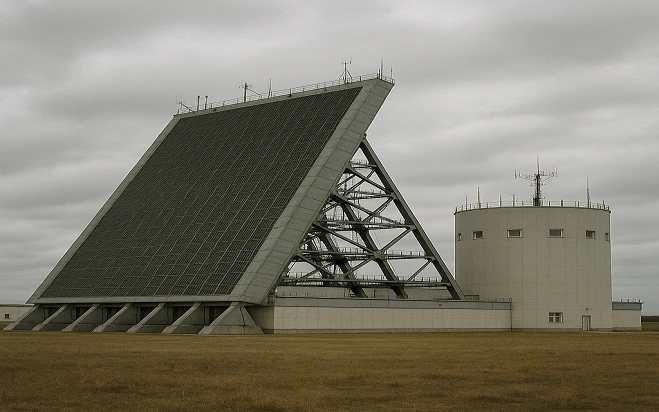Introduction
The Voronezh radar systems represent a new generation of Russian early-warning radar technology. These systems are designed for long-range detection of ballistic missile launches and other aerial threats. They play a crucial role in Russia’s air defense strategy, offering improved detection capabilities, efficiency, and mobility over older Soviet-era systems.
Table of Contents
ToggleVoronezh Radar Stations in Russia’s Air Defense Network
Voronezh radar stations form a vital part of Russia’s ballistic missile early-warning system. These radar installations are strategically positioned across the country to ensure comprehensive coverage and early detection of any incoming threats. Compared to older systems, Voronezh radars are modular, energy-efficient, and faster to deploy.
| Feature | Description |
|---|---|
| Type | Early-warning radar |
| Range | Up to 6,000 km |
| Coverage | 240°–360°, depending on configuration |
| Deployment Time | Approx. 18–24 months |
| Role | Detection of ballistic missiles and aircraft |
Development of Voronezh Radar Technology
The development of Voronezh radar technology began in the early 2000s as part of an initiative to replace aging Soviet radar systems. Unlike earlier models, Voronezh radars use prefabricated modules, which significantly reduce installation time and construction costs. The technology has evolved into multiple variants based on the frequency band and purpose.
| Model | Frequency Band | Operational Since | Purpose |
|---|---|---|---|
| Voronezh-M | VHF | 2005 | General long-range surveillance |
| Voronezh-DM | UHF | 2007 | Missile and object tracking |
| Voronezh-SM | Centimeter | 2010s | High-resolution object detection |
Voronezh as a Hub for Radar and Defense Technology
Voronezh is not only home to radar installations but also hosts a number of defense technology firms and research centers that support Russia’s strategic radar capabilities. These institutions contribute to research, development, and training, making Voronezh a significant military-industrial center.
| Institution | Function |
|---|---|
| Voronezh Design Bureau of Communications | Radar system design and R&D |
| Military Academy in Voronezh | Officer training and radar studies |
| Radio-Electronic Technology Firms | Production of radar components |
Modernization of Radar Systems in Voronezh
Modernization efforts focus on improving detection accuracy, integrating AI for automated tracking, and increasing resistance to electronic warfare. The modular design of Voronezh radars makes upgrades relatively simple, allowing for faster implementation of technological advancements.
| Upgrade Area | Description |
|---|---|
| Signal Processing | Enhanced target discrimination |
| AI Integration | Automated object classification |
| Cybersecurity | Improved resistance to hacking and jamming |
| Power Efficiency | Reduced operational energy costs |
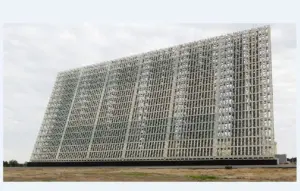
Voronezh’s Role in Global Radar Research
Voronezh radar systems have attracted global attention for their modularity and rapid deployment. While much of the research is domestic, Russia’s collaborations with allies in radar and surveillance technologies are often centered around the innovations developed in Voronezh.
| Research Area | International Relevance |
|---|---|
| Phased Array Design | Improved global radar efficiency |
| Remote Sensing | Environmental and space monitoring |
| Missile Detection | Shared data networks with allies |
Voronezh Radar and Its Role in Civil Aviation
Though primarily military, radar technologies in Voronezh also support civil aviation. Advanced radar systems are used for air traffic control and navigation in the region, ensuring flight safety and efficient airspace management.
| Application Area | Radar Use |
|---|---|
| Air Traffic Control | Monitoring and directing flights |
| Weather Forecasting | Aviation safety |
| Emergency Services | Search and rescue radar systems |
Voronezh’s Radar and Meteorological Applications
Voronezh radar systems are also used for weather monitoring. Their high sensitivity allows for the detection of storm systems, precipitation, and atmospheric anomalies, making them valuable tools for civilian meteorological services.
| Feature | Function |
|---|---|
| Doppler Radar | Wind speed and direction analysis |
| Precipitation Detection | Early warning for floods and storms |
| Atmospheric Scanning | Climate research |
Read More : Hal Tejas
Military Radar Systems in Voronezh
The military applications of Voronezh radar systems include missile tracking, space surveillance, and battlefield situational awareness. They form a backbone of Russia’s early warning defense line.
| System Variant | Primary Use |
|---|---|
| Voronezh-M | Early missile warning |
| Voronezh-DM | Aircraft and satellite tracking |
| Integrated C4I | Command, control, communications, intel |
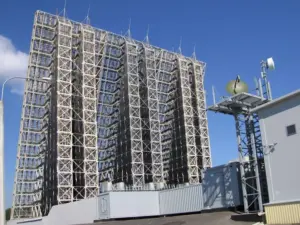
Future Trends in Radar Technology in Voronezh
Voronezh radar systems are expected to incorporate AI, machine learning, and quantum radar technologies. These innovations aim to enhance detection capabilities and resilience against stealth and electronic warfare.
| Technology | Expected Benefit |
|---|---|
| Quantum Radar | Detect stealth aircraft |
| AI Algorithms | Real-time threat classification |
| Cloud Integration | Shared radar data across military units |
Challenges in Radar System Deployment in Voronezh
Despite technological prowess, the deployment of Voronezh radar systems faces several challenges, including geopolitical tensions, funding limitations, and maintenance of remote sites.
| Challenge | Impact |
|---|---|
| Sanctions | Limited access to foreign tech |
| Remote Locations | Logistics and maintenance difficulties |
| Budget Constraints | Slower modernization efforts |
Voronezh Radar Range
The range of the Voronezh radar varies by model but typically extends up to 6,000 km, covering vast parts of Europe, the Middle East, and Asia. This extensive reach ensures early warning across strategic directions.
| Radar Model | Range (Approx.) |
|---|---|
| Voronezh-M | ~4,200 km |
| Voronezh-DM | ~6,000 km |
| Voronezh-SM | ~5,000 km |
Voronezh Radar Frequency
Voronezh radars operate across multiple frequency bands to enhance detection versatility, including VHF, UHF, and centimeter bands.
| Model | Frequency Band |
|---|---|
| Voronezh-M | VHF (~30–300 MHz) |
| Voronezh-DM | UHF (~300–1000 MHz) |
| Voronezh-SM | Centimeter waves (~3–30 GHz) |
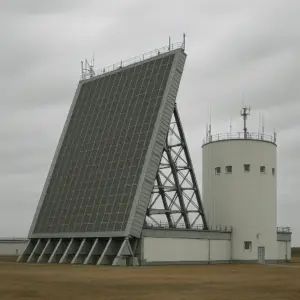
Voronezh Radar Cost
The cost of a Voronezh radar system varies depending on its specifications. Estimates suggest costs range from hundreds of millions to over a billion rubles per station.
| Component | Estimated Cost (in Rubles) |
|---|---|
| Basic Infrastructure | 1–2 billion |
| Radar Arrays | 500–800 million |
| Software and Upgrades | 300–500 million |
Voronezh Radar Russia
Voronezh radar systems are a cornerstone of Russia’s national defense architecture. They are deployed across strategic borders to monitor missile launches and air threats in real time.
| Location | Operational Status |
|---|---|
| Kaliningrad | Active |
| Armavir | Active |
| Orsk, Orenburg | Planned/Testing |
Voronezh Radar UPSC
The topic of Voronezh radar is relevant in the UPSC (Union Public Service Commission) context for aspirants in international relations, defense technology, and geopolitical studies.
| Relevance Area | UPSC Paper |
|---|---|
| International Relations | GS Paper II |
| Defense Technology | GS Paper III |
| Strategic Installations | Essay/Optional Subjects |
Read More : Russian su 57 fighter jet
Voronezh Radar Destroyed
There have been unconfirmed reports and speculations about damage or sabotage to radar facilities during military conflicts or accidents, though Russia typically does not disclose such information officially.
| Event | Status |
|---|---|
| 2023 Border Attack | No official damage reported |
| Sabotage Claims | Unverified by Russian authorities |
| Drone Strike Incidents | No impact on radar reported |
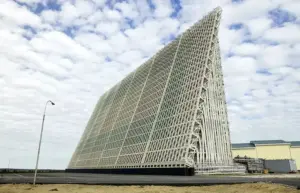
Voronezh Radar Chitradurga
There is no direct link between the Russian Voronezh radar system and Chitradurga, India. However, both regions are associated with advanced radar and space surveillance activities.
| Location | Radar Facility Purpose |
|---|---|
| Voronezh, Russia | Military early warning |
| Chitradurga, India | ISRO & DRDO testing site |
Voronezh Radar Price
The pricing of Voronezh radar stations is influenced by modular customization, size, and upgrades. While full costs are classified, available estimates give a broad idea of the expenditure.
| Radar Type | Approximate Price (USD) |
|---|---|
| Voronezh-M | $150–200 million |
| Voronezh-DM | $200–300 million |
| Voronezh-SM | $250+ million |
Conclusion: The Strategic Significance of Voronezh Radar
The Voronezh radar systems represent a leap forward in Russia’s defense and surveillance technology. As part of the country’s early-warning network, these radars provide critical data for missile detection, aerospace tracking, and weather monitoring. Their modularity and rapid deployment capability make them a strategic asset not only for national defense but also for civil aviation and meteorological applications.
Furthermore, Voronezh’s significance as a hub for radar development underscores its role in shaping the future of radar technology. With global interest growing in advanced detection systems, Voronezh stands as a symbol of Russia’s commitment to maintaining technological superiority in the fields of defense and aerospace.
As radar systems continue to evolve with AI, quantum detection, and better integration with networked defense infrastructure, Voronezh radar technology is poised to remain at the forefront of international radar innovation—despite the geopolitical and logistical challenges it may face.
Read More : Brahmos Missile
Summary Table: Voronezh Radar Key Facts
| Category | Details |
|---|---|
| Purpose | Missile early-warning, air surveillance, civil aviation, weather |
| Range | Up to 6,000 km (depending on the variant) |
| Frequency Bands | VHF, UHF, Centimeter |
| Deployment Time | 18–24 months (modular installation) |
| Countries with Similar Tech | USA (PAVE PAWS), China (JY-27A), India (Swathi Radar, developing equivalents) |
| Notable Installations | Kaliningrad, Armavir, Orsk |
| Use in UPSC Studies | IR, GS Paper III, Strategic Studies |
| Cost Estimate | $150–300 million per station |
| Dual Use | Civil aviation safety, meteorology |
| Modern Technologies Used | Phased array, AI, automation, remote monitoring |
